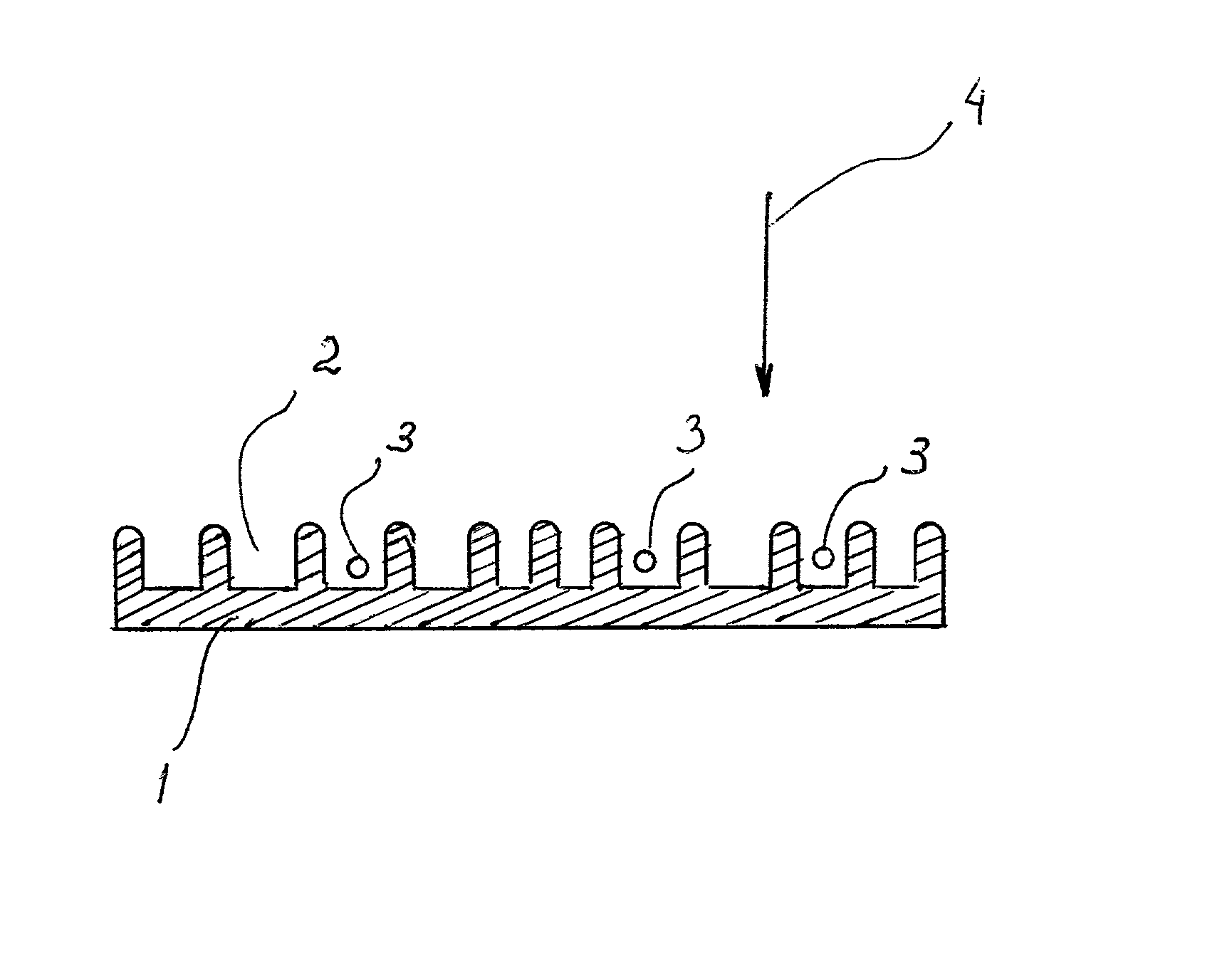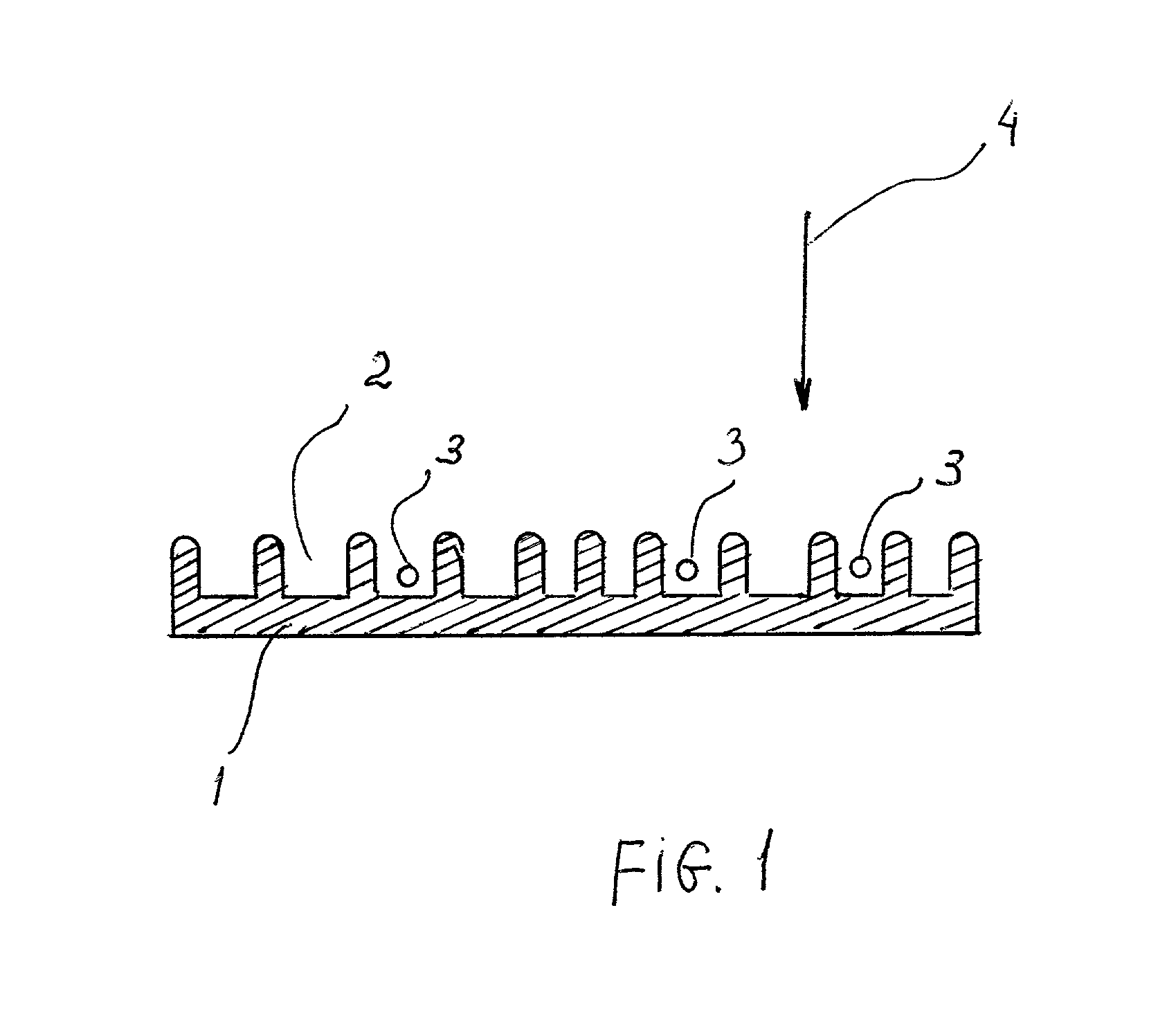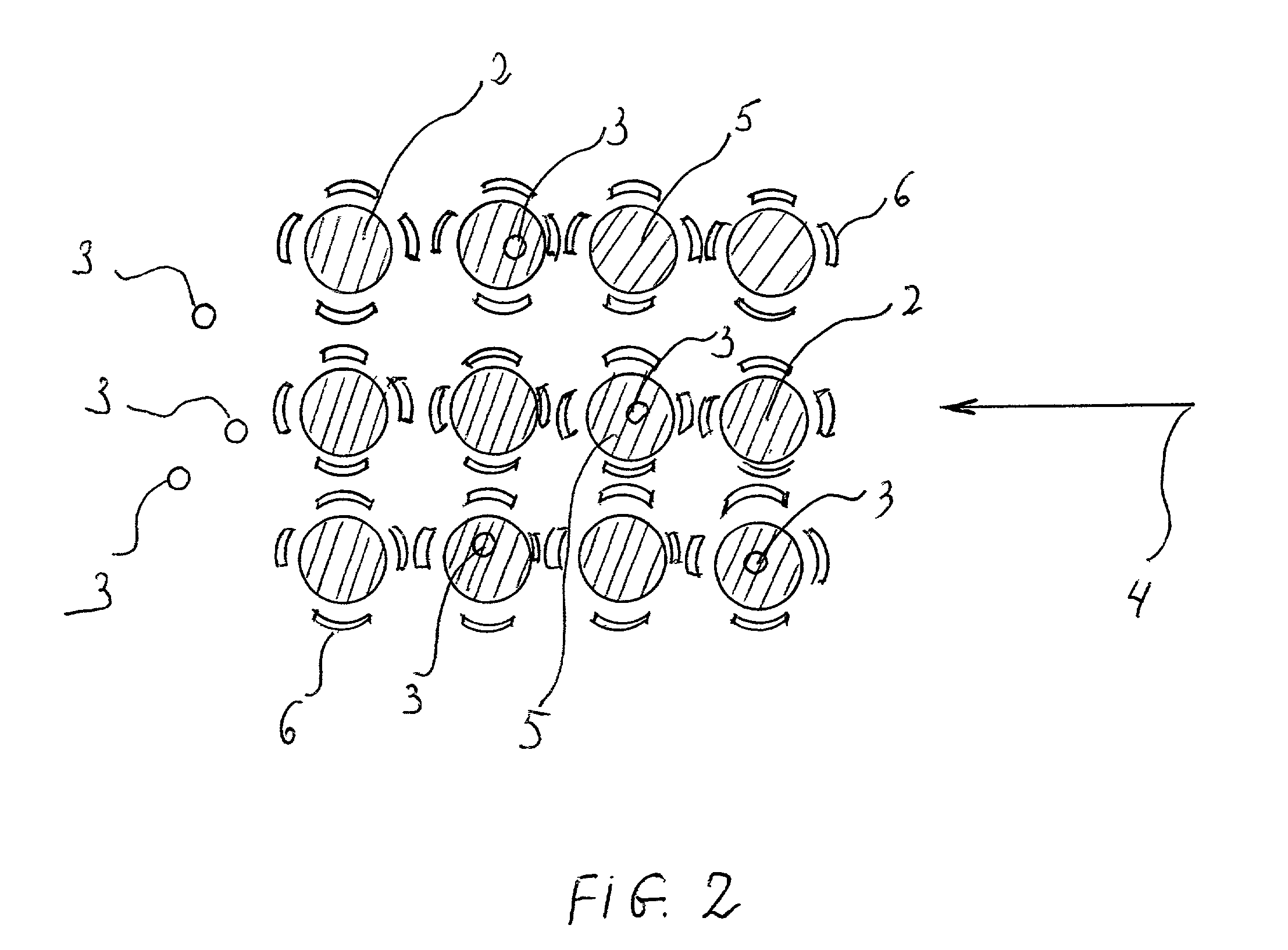Compact sensor using microcavity structures
a microcavity structure and sensor technology, applied in the field of compact devices, can solve the problems of the noise floor of the detection system, and achieve the effects of strong signal, enhanced electric field of the probe beam, and stronger received signal
- Summary
- Abstract
- Description
- Claims
- Application Information
AI Technical Summary
Benefits of technology
Problems solved by technology
Method used
Image
Examples
Embodiment Construction
1. Sensor in General
[0076] A simple example of an array of microcavities is shown in FIG. 1. A metal or dielectric surface 1 is textured with a lattice to form microcavities 2, into which particles of material to be detected 3 can fall. Due to the field enhancement inside the cavity 2, the absorption of the probe beam 4 is much greater than it would be if the particle were simply in a free space or on a smooth surface, as explained in more detail below.
[0077] The basic principle upon which this invention is based, is the principle of enhancement of electromagnetic field by an array of microcavities and it can be explained as follows. When a chemical compound enters one of the microcavities, it feels a much greater applied electromagnetic field when the probe beam is near the resonance frequency of the cavities. In effect, the probe beam samples the chemical compound multiple times. The magnitude of this enhancement is proportional to the Q of the cavities. This is similar to the enh...
PUM
 Login to View More
Login to View More Abstract
Description
Claims
Application Information
 Login to View More
Login to View More - R&D
- Intellectual Property
- Life Sciences
- Materials
- Tech Scout
- Unparalleled Data Quality
- Higher Quality Content
- 60% Fewer Hallucinations
Browse by: Latest US Patents, China's latest patents, Technical Efficacy Thesaurus, Application Domain, Technology Topic, Popular Technical Reports.
© 2025 PatSnap. All rights reserved.Legal|Privacy policy|Modern Slavery Act Transparency Statement|Sitemap|About US| Contact US: help@patsnap.com



